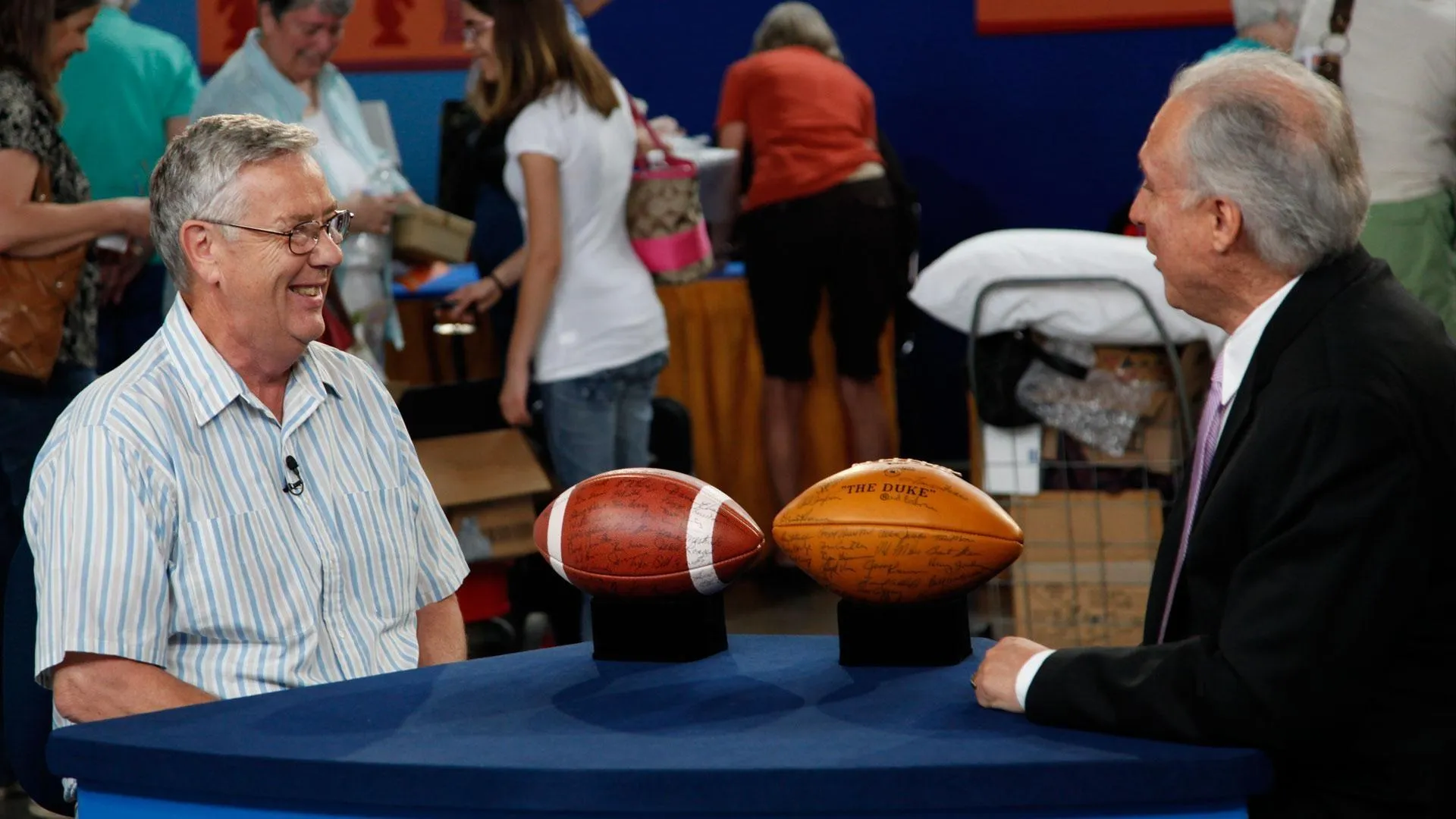GUEST: My daughter got it from her father-in-law. And, of course, it's very heavy. And she put it on the floor under the kitchen cabinet right next to the dog food dish. And it was there for two years, and I kept looking at it because I thought it was so pretty. And she gave it to me.
APPRAISER: And do you know what it's made of?
GUEST: I was hoping it's marble; I don't know.
APPRAISER: Well, as you've learned today carrying it around, it's pretty heavy.
GUEST: Yes.
APPRAISER: And it is made of marble.
GUEST: Oh, good.
APPRAISER: And the artist's name is Erastus Dow Palmer, who was American. Born in 1817, died in 1904. And is widely considered to be one of the most important American sculptors of the 19th century. He is one of the earliest in the American neoclassical movement. And this subject, while we don't know who it is, is really wonderfully carved. And on the reverse of the plaque, it's signed "1864."
GUEST: Oh, my.
APPRAISER: So we know the date. While many of the neoclassical movement sculptors from America traveled to Italy for an education, he was self-taught, which is another reason why he's considered to be such an important artist in the neoclassical movement. As we can see, we have a minor condition issue to the nose, which is a chip to the marble. And generally that would affect the value, and I feel that it has a little bit, but he's considered to be such an important artist that it doesn't bring it down as much as one might expect. If I were to see this at auction, I would put an auction estimate of $10,000 to $15,000 on it.
GUEST: And I've been carrying it around all afternoon. Oh, my.
APPRAISER: Eleven years ago, a similar plaque sold for $35,000. Now, the market has gone up and down and up and down since then. So we feel that $10,000 to $15,000 is a conservative auction estimate.
GUEST: Thank you very much.
APPRAISER: Thank you. Thanks for bringing it in.











